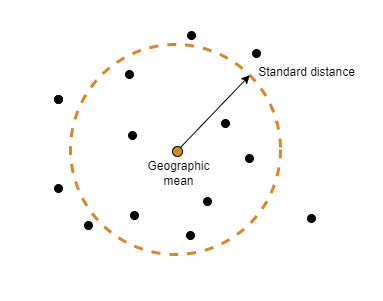stdist
Standard distance of geographic points
Syntax
Description
dist = stdist(lat,lon)lat and lon. This syntax references the points
to a unit sphere, assumes the points are specified in degrees, and returns the standard
distance in degrees.
Standard distance measures the dispersion of great-circle
distances from each point to the geographic mean (centroid) of the points. For more
information about the geographic mean, see meanm.

Examples
Input Arguments
Output Arguments
Version History
Introduced in R2006a